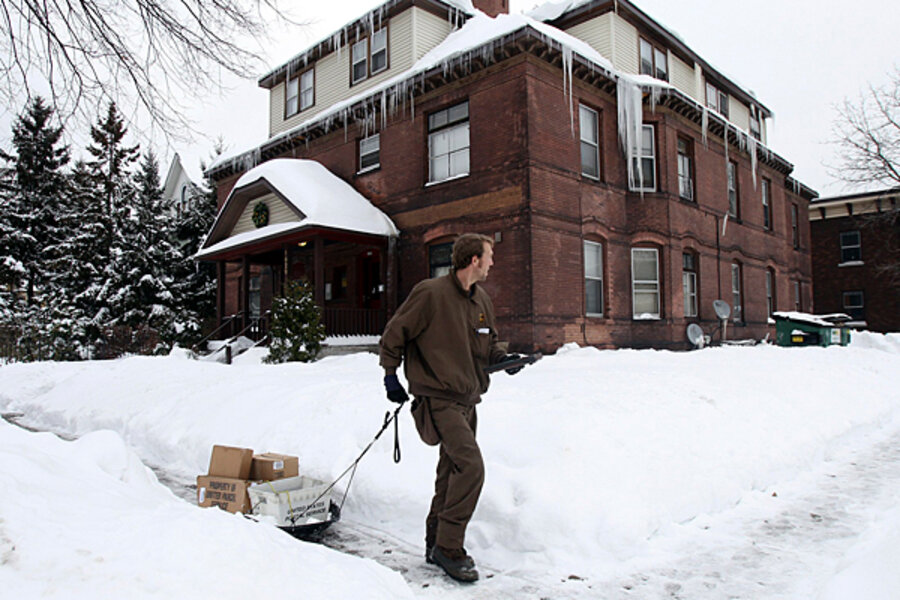Snow storm: Who will get a white Christmas?
| Atlanta
A major winter storm that caused mudslides and flooding in southern California is fast making its way across the United States, promising a white Christmas to cities like Memphis, Tenn.; Charlotte, N.C.; and Atlanta, a city that last saw a big Christmas snowfall in 1882.
Meteorologists expect the storm to effectively dip and curve around the southern Appalachians, possibly bringing up to four inches of snow to Atlanta's northern reaches before turning toward the northeast. One European weather model shows snow falling on New York City late Christmas Day and across Boston after that, but a small variation in the jet stream could push the brunt of the snow storm offshore.
For a taste of how the weather could affect heavier-than-last-year Christmas travel from the Dakotas to West Virginia, consider this watch that the National Weather Service posted: "Through Thursday night. Travel will become hazardous. Holiday travelers should be prepared for slick roads and reduced visibility."
About half of the US is currently under snow cover, including most of the Mountain West, the Midwest, as well as sections of the Appalachians and most of the Northeast. Earlier in the week, weather experts expected the storm to travel across the Midwest, but now, cities like Chicago and Cincinnati are not expected to see any accumulation from the system.
"This storm has been tracking farther south than what was originally thought, and it does look now like it will move offshore. But the question is how far offshore," says Alan Reppert, senior meteorologist at AccuWeather.com. "This storm could be too far off to the east for even New York and Philly to see any snow, but the main city now is Boston and how much snow they will see" after Christmas.
The unusual storm system dropped nearly two feet of rain on some parts of California, turning into 17 feet of snow in parts of the Sierra Nevada mountains. The system sent muddy floodwaters through some of the California coast's toniest towns, including Laguna Beach, and at least one hillside sloughed off, burying part of an interstate.
The quirky early winter weather across the US is being affected both by La Niña conditions in the Pacific and a system called the "Greenland Block," an Atlantic high-pressure oscillation that has been pushing cold Arctic air into the Deep South. In the new year, that oscillation is expected to weaken, says Mr. Reppert – meaning the cold weather will move further north, leaving the Southeast with a warmer and wetter winter than usual.
The breadth and depth of the potential snowfall from the Christmas storm are still up in the air, meteorologists say. If the storm stays mostly on land, up to 72 million Americans could be affected by snowy conditions on Sunday and Monday. If it strays offshore, some 42 million mostly coastal residents will be affected, according to the Weather Channel. One Boston forecast calls for a foot of snow just in time for post-holiday travel.
Snow angels will surely dot the landscape from northern Alabama to Atlanta's northern suburbs if the current Christmas storm stays on track. But most East Coast residents shouldn't put too much stock in the prospect of a Currier & Ives-style Christmas, with snow decorating the trees, according to one meteorologist.
“Right now there is still low confidence, but the risk is certainly there for something major,” Travis Hartman, energy weather manager at MDA EarthSat Weather in Rockville, Md., tells Bloomberg News. “With that being said, I am leaning toward less than what some of the hypes are out there for a crippling storm.”





